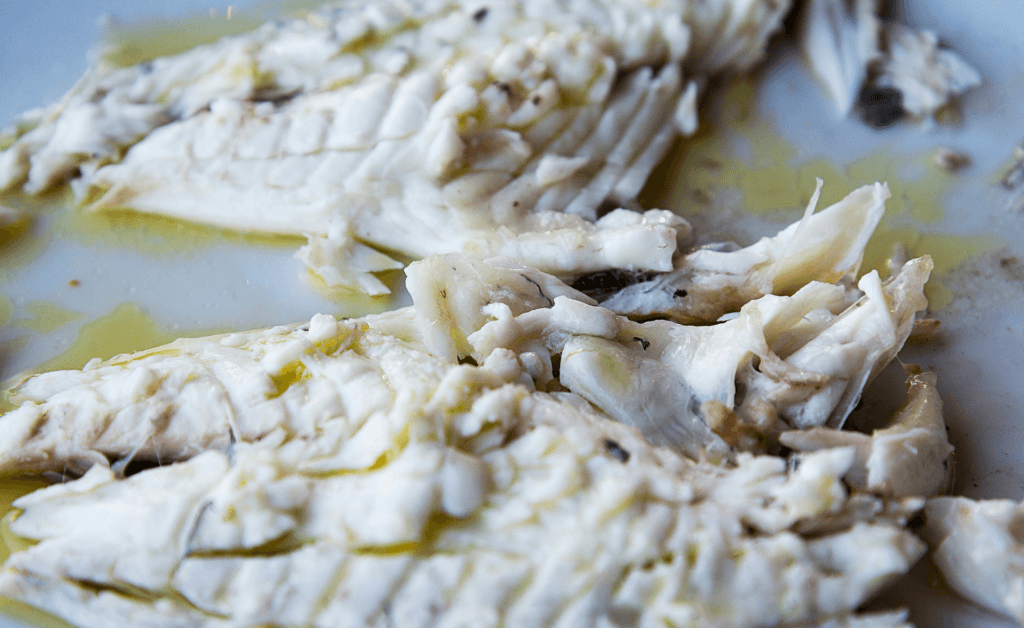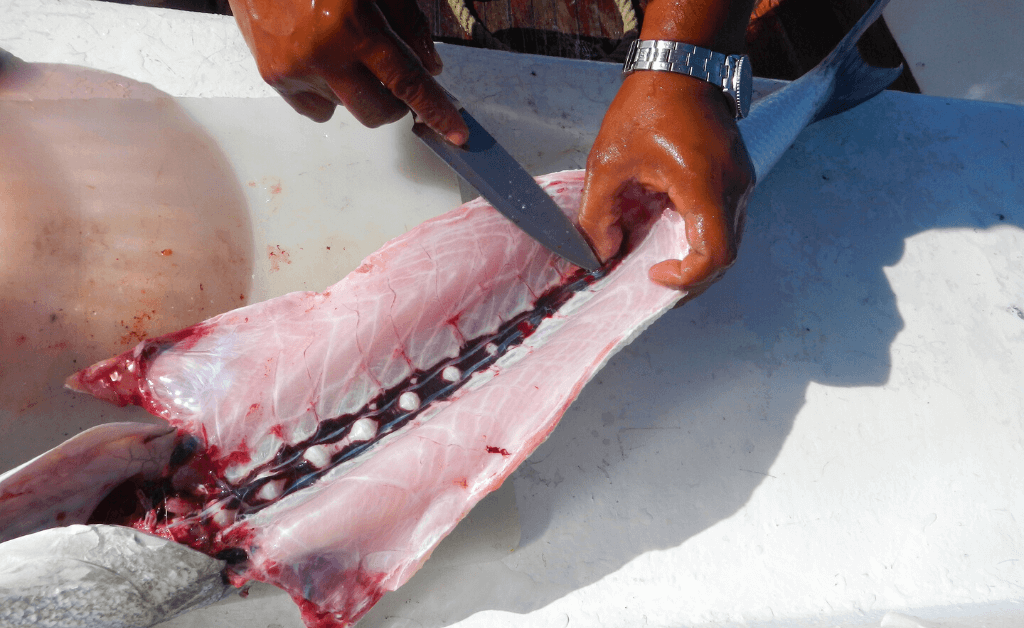Just looking at a barracuda, you can tell it’s not the friendliest-looking fish out there. With its sharp teeth and steely gaze, it’s no wonder that some people might be hesitant to eat barracuda. But what exactly is this fish, and is it safe to eat?

Barracuda are predatory fish that are found in warm waters all over the world. They can grow quite large, up to five feet long in some cases. Barracuda meat is off-white with a meaty, firm texture. It is often compared to swordfish or shark meat in terms of appearance.
So, is it safe to eat barracuda fish? The answer is yes – although there are some caveats. In this article, we’ll explore potential safety concerns with eating barracuda, what they taste like, and how to prepare them for cooking.
Are Barracuda Good To Eat?
Simply put, yes. Barracuda are good to eat. In fact, they’re considered prized fish, both as game and food fish. Their meat is both high in protein and low in fat, making it a healthy choice for those looking for a leaner fish option. They’re also rich in vitamin B2 and Omega-3 fatty acids, which help support heart health and produce red blood cells.
That said, only smaller species of barracuda are sold commercially and consumed as food. The larger species are often avoided due to the possibility of ciguatera poisoning, which we’ll discuss in more detail later on.
What Does Barracuda Taste Like?
Barracuda meat has a robust flavor with a slightly sweet taste. While it possesses a stronger fish flavor than more traditional whitefish like cod or haddock, it’s not as overwhelmingly fishy as some other types of seafood, such as anchovies.

The meat’s texture is firm and flaky, often eaten as a steak or in filets. As a result, it’s versatile and can be cooked in several different ways, including baking, grilling, frying, and smoking. While the flavor does vary slightly depending on how you cook it, expect a full-flavored, mildly sweet taste reminiscent of halibut or wild tuna.
Is It Safe To Eat Barracuda?
As mentioned, eating smaller species of barracuda is typically considered perfectly safe. However, before you dive in headfirst and add it to your dinner menu, there are certain things to be aware of.
Like most fish, barracuda can carry some pretty nasty stuff around with them – think parasites and mercury contamination. So if you’re buying barracuda meat rather than catching it yourself, make sure it comes from a reputable source and has been properly sourced, cleaned, and stored.
In addition, larger barracuda pose the risk of ciguatera poisoning, which is why we’re warned against eating them. Ciguatera poisoning is a foodborne illness resulting from consuming certain reef fish, including barracuda, contaminated by toxins produced by microalgae called Gambierdiscus toxicus.
The toxins that cause the illness are found in the fish’s flesh and accumulate as the fish moves up the food chain. As a result, the bigger the fish, the greater the risk of ciguatera poisoning. Being an apex predator, large barracuda are among the fish most likely to contain these toxins.
How To Prepare Barracuda
If cleaning the fish yourself, first make an incision behind the pectoral fin (the two fins on the side), moving your knife towards the head and cutting down to the spine. Then, gently cut along the outside of the belly, starting from where your first incision ends at the spine and moving to the tail.
After that, while resting your knife on the fish’s spine, cut along the inside of the fish towards the head. This will expose the filet and reveal the backbone.

Next, use your knife to separate the meat from the pin bones (the thin bones running along the length of the filet) located behind the pectoral fin.
Finally, angle your knife and cut towards the other side of the backbone, making sure not to cut through the ribs. A few more cuts will release the filet, which can then be removed. Repeat this process to remove the filet on the other side of the fish.
As you’re cleaning, keep an eye out for signs of parasitic infection, such as small cysts under the skin or abnormalities around the mouth and gills. Generally speaking, barracuda aren’t bothered by parasites as often as other fish, but it’s still something to be aware of. If you see anything weird, it’s best to discard the fish.
How To Cook Barracuda
Barracuda meat is quite dense, so it needs to be cooked thoroughly to kill any harmful bacteria that may be present. The USDA advises cooking fish to an internal temperature of 145 degrees Fahrenheit, but some people prefer higher temperatures to be on the safe side.
Baking is one of the simplest ways to cook barracuda. Preheat your oven to 345 degrees Fahrenheit and line a baking sheet with parchment paper. Place the fish on the baking sheet, season with salt and pepper, sprinkle with oil, and bake for 20-30 minutes, or until thoroughly cooked.
Grilling is another popular option – especially after marinating the fish for a few hours. First, preheat your grill to high heat. Next, place the barracuda steaks on the grill and lower the heat to medium. Then, lower the grill cover and cook for 7-8 minutes per side until cooked through.
If pan-frying barracuda, heat some oil in a large skillet over medium-high heat. Add the fish, skin side facing down, to the skillet and fry until the skin is a crispy golden brown. Then, flip the fish and cook for an additional minute or two to seal the fish.
Final Verdict
So, can you eat barracuda fish? Yes, you can – but now you know there are certain things to be aware of before you do. Make sure you purchase barracuda from a reputable source, clean the fish properly, and cook it properly to minimize the risk of foodborne illness. When prepared correctly, barracuda makes a delicious, healthy meal versatile enough to suit most tastes. Enjoy!
- Do You Need An Indicator For Nymph Fishing? - November 16, 2023
- Fishing Safety Tips For Families - September 25, 2023
- What Is The Best Time To Night Fish At A Lake? - September 18, 2023



![Does Bass Have Teeth? [How to Handle Bass Safely] does-bass-have-teeth](https://irvinelake.net/wp-content/uploads/2022/09/does-bass-have-teeth-150x150.png)





